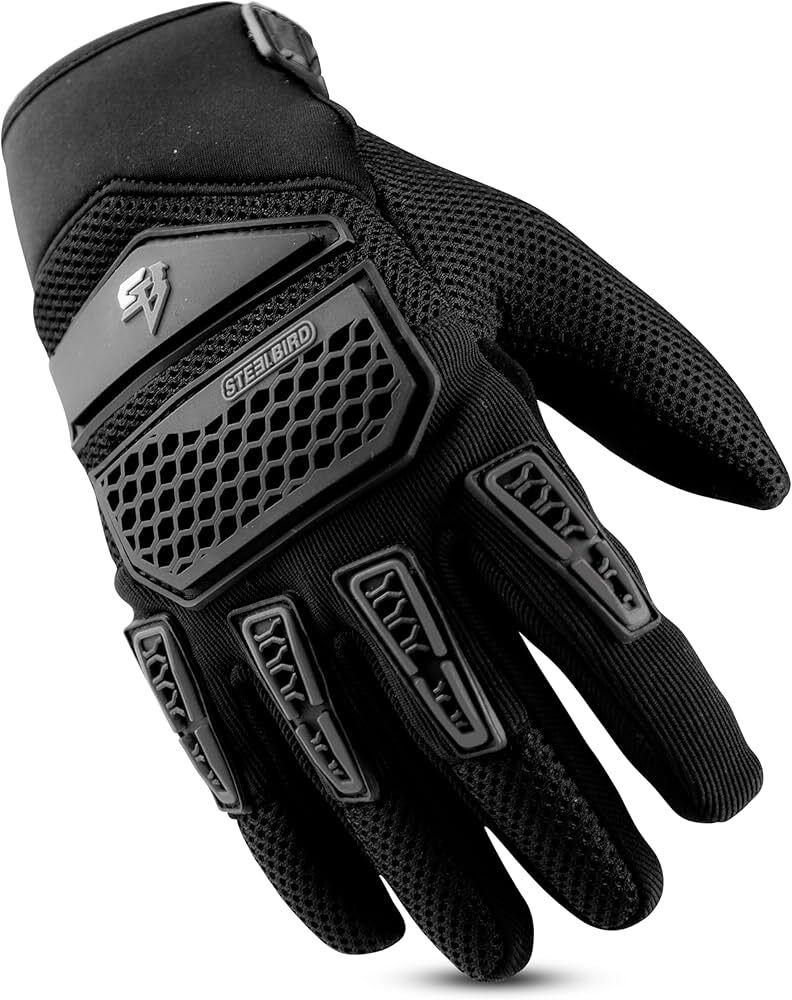Riding a motorcycle is not just a mode of transport — it’s a passion. Whether you are a daily commuter, a weekend adventurer, or a professional rider, safety should always be your top priority. Among all protective gear, riding gloves are one of the most essential items you should never overlook. They not only provide comfort but also protect your hands from injuries, weather, and fatigue. In this guide, we’ll explore everything you need to know about riding gloves — from types and materials to buying tips and maintenance.
Why Riding Gloves Are Essential
Riding gloves are more than just a fashion accessory. They play a critical role in protecting riders in various ways:
Hand Protection During Accidents
Hands are often the first part of the body to make contact with the ground in case of a fall. Proper gloves reduce the risk of cuts, scrapes, and fractures.Weather Protection
Cold, rain, and strong sunlight can affect your grip and riding comfort. Insulated gloves keep your hands warm, waterproof gloves keep them dry, and UV-protected gloves shield your skin from sun damage.Improved Grip and Control
Gloves are designed to provide better friction between your palms and handlebars, which helps you maintain full control of your motorcycle even during long rides or wet conditions.Reduced Fatigue
Long rides can make your hands sore due to vibrations and continuous grip. Good riding gloves reduce pressure points and help minimize fatigue, making your journey safer and more comfortable.
Types of Riding Gloves
There is a wide range of riding gloves available, each designed for specific purposes and riding conditions. Here’s a detailed look at the most common types:
1. Street Riding Gloves
Street gloves are designed for everyday commuting. They are lightweight, breathable, and offer basic protection for city rides. Most street gloves are made of textile or leather with minimal armor on the knuckles and palms.
Best for: Daily riders and casual city commuting.
2. Racing or Sport Gloves
Racing gloves are built for speed and high performance. They usually feature reinforced knuckles, carbon fiber protection, and padded palms to withstand high-speed accidents. These gloves are snug-fitting to maximize control over your motorcycle.
Best for: Track riders and sports bike enthusiasts.
3. Touring Gloves
Touring gloves are made for long-distance riders. They are designed to withstand changing weather conditions, often featuring waterproof materials, thermal insulation, and extended wrist protection. Touring gloves focus on comfort for hours of riding without sacrificing safety.
Best for: Long-distance travelers and adventure riders.
4. Off-Road Gloves
Off-road or dirt bike gloves provide flexibility and ventilation while offering protection from mud, rocks, and debris. They often include extra padding on the palm and reinforced knuckles for rough terrains.
Best for: Dirt biking, adventure, and trail riding.
5. Heated Gloves
For riders in cold climates, heated gloves are a game-changer. They come with built-in heating elements powered by a battery to keep hands warm during freezing rides.
Best for: Winter riders and high-altitude bikers.
Materials Used in Riding Gloves
The material of riding gloves greatly affects safety, comfort, and durability. Here are the most common materials:
Leather: Offers superior protection, abrasion resistance, and durability. Genuine leather gloves are often used for street, racing, and touring gloves.
Textile/Fabric: Lightweight and breathable, suitable for city commuting and summer riding. Some textile gloves also include waterproof membranes.
Kevlar or Synthetic Reinforced Materials: Often used in high-end racing gloves for extra durability and cut resistance.
Mesh: Provides ventilation for hot weather rides but offers minimal protection.

Key Features to Look for in Riding Gloves
Choosing the right riding gloves can make a huge difference in safety and comfort. Here’s what to look for:
Fit: Gloves should be snug but not tight. Loose gloves can slip off or reduce grip, while tight gloves can restrict blood flow.
Protection: Check for reinforced knuckles, padded palms, and extra wrist protection.
Flexibility: Ensure fingers can move freely for proper control over brakes, clutch, and throttle.
Weather Resistance: Waterproof gloves for rainy rides, insulated gloves for cold climates, and ventilated gloves for hot weather.
Closure Type: Velcro, strap, or zipper closures help secure gloves in place.
How to Choose the Right Riding Gloves
Here’s a step-by-step guide for selecting the perfect pair:
Determine Your Riding Style: City, long-distance touring, racing, or off-road? Each requires a specific glove type.
Select the Material: Leather for durability, textile for breathability, or specialized materials for extreme conditions.
Measure Your Hand: Follow the manufacturer’s sizing chart to ensure a perfect fit.
Test Grip and Flexibility: Make sure you can comfortably operate all controls while wearing gloves.
Check Reviews and Brand Reputation: Trusted brands often offer better quality and safety standards.
Benefits of Using Riding Gloves
Using high-quality riding gloves offers multiple advantages:
Enhanced Safety: Protects hands during accidents or sudden falls.
Weather Adaptation: Keep hands dry, warm, or cool depending on conditions.
Better Control: Improves grip and reduces hand fatigue.
Durability: High-quality gloves last longer and provide consistent performance.
Style and Comfort: Modern gloves come in various designs, allowing you to ride safely without compromising style.
Maintenance Tips for Riding Gloves
Proper maintenance can extend the life of your gloves and maintain their protective features:
Regular Cleaning: Use mild soap and water for textile gloves; use leather cleaner for leather gloves.
Avoid Direct Sunlight: Sunlight can dry out leather and cause cracking.
Dry Properly: Air dry gloves naturally, avoiding heaters or dryers.
Store Correctly: Keep gloves in a cool, dry place. Use a glove bag or box for long-term storage.
Condition Leather Gloves: Apply leather conditioner to prevent stiffness and maintain flexibility.
Riding Gloves for Different Seasons
Summer: Lightweight, ventilated gloves to keep hands cool.
Winter: Insulated or heated gloves for warmth.
Rainy Season: Waterproof gloves to prevent slipping and keep hands dry.
By choosing gloves suitable for each season, you ensure comfort and safety year-round.
Common Mistakes to Avoid
Buying the cheapest gloves — can compromise safety.
Wearing gloves that are too loose or too tight.
Ignoring weather conditions while choosing gloves.
Using old or damaged gloves — replace them after accidents or wear and tear.
Skipping maintenance — reduces glove lifespan and safety.
Conclusion
Riding gloves are an indispensable part of a rider’s gear. They combine safety, comfort, and style, ensuring that every ride — whether short or long — is enjoyable and secure. From street commuting to off-road adventures, investing in a high-quality pair of gloves tailored to your riding style is crucial. Remember to consider material, protection, fit, and weather adaptability when selecting your gloves, and maintain them properly to prolong their lifespan.
Ride safe, ride smart, and never compromise on your riding gloves!

